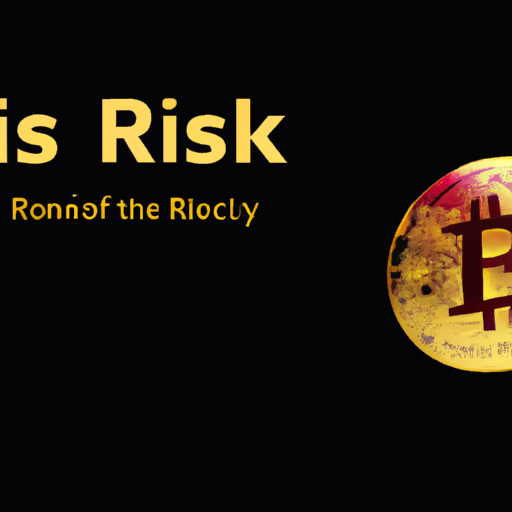In the world of investments, gold has always held a certain allure. Its history of stability and value retention makes it an attractive option for many investors. However, what often gets overlooked in this pursuit of financial gain is the emotional and psychological risks that come with investing in gold. While it may seem like a straightforward decision on the surface, it’s important to consider the potential impact on your mental well-being. Whether it’s the fear of losing your hard-earned money or the stress of constantly monitoring market fluctuations, these emotional factors can significantly influence your investment journey. Taking a deeper look into these aspects is crucial for anyone looking to venture into the world of gold investments.
Understanding Gold Investments
Investing in gold has been a popular strategy for individuals looking to diversify their investment portfolio and protect their wealth. Gold has consistently been seen as a safe haven asset, providing a hedge against inflation and financial uncertainty. In this article, we will delve into the reasons why investing in gold can be beneficial, the different types of gold investments available, and the risks and psychological factors that should be considered when making gold investments.
Why Invest in Gold?
Gold has been valued for centuries, and its enduring appeal stems from several key factors. Firstly, gold is a tangible asset, meaning that it has physical form and can be held in your possession. This can provide a sense of security and stability in times of economic turmoil or market volatility. Additionally, gold has historically maintained its value over the long term and has acted as a store of wealth. This makes it an attractive option for investors who are seeking to preserve their capital and generate steady returns.
Benefits of Gold Investments
Investing in gold offers a range of benefits that set it apart from other investment options. One major advantage is its ability to act as a hedge against inflation. In times of rising prices and eroding purchasing power, gold has historically retained its value and even increased in price. This helps to protect the investor’s wealth and maintain their standard of living. Furthermore, gold is a globally recognized and accepted form of currency. It is not subject to the same risks as fiat currencies, which can be impacted by factors such as government policies, economic instability, or geopolitical tensions.
Different Types of Gold Investments
There are various ways to invest in gold, each with its own unique set of characteristics and considerations. One common method is purchasing physical gold, such as gold coins or bars. This allows you to have direct ownership and control over your investment, and it can be a source of emotional attachment for some investors. Another option is investing in gold exchange-traded funds (ETFs), which are traded on stock exchanges and track the price of gold. This provides a more convenient and liquid way to invest in gold without the need for physical storage. Additionally, gold mining stocks and mutual funds that focus on gold mining companies can also be considered as indirect investments in gold.
Financial Risks in Gold Investments
While investing in gold can offer numerous benefits, it is important to be aware of the potential financial risks involved. Understanding and evaluating these risks is crucial for making informed investment decisions and managing portfolio volatility.
Volatility in Gold Prices
One significant risk in gold investments is the potential for price volatility. Like any other asset, the price of gold can fluctuate due to various market factors, such as supply and demand dynamics, economic indicators, and geopolitical events. These fluctuations can result in rapid price movements, which can be both advantageous and perilous for investors. It is important to closely monitor market conditions and stay well-informed to mitigate the impact of volatility on your investment.
Inflation and Currency Depreciation
Another risk to consider is the impact of inflation and currency depreciation on the value of gold. In times of high inflation, the purchasing power of fiat currencies decreases. However, gold has historically acted as a hedge against inflation and retained its value. On the other hand, if the value of a particular currency depreciates significantly, the price of gold denominated in that currency may increase. It is essential to understand the relationship between inflation, currency depreciation, and gold prices to effectively protect your investment against these risks.
Market Manipulation
Market manipulation is a risk that exists across various financial markets, including the gold market. Manipulative practices, such as price manipulation, insider trading, and market rigging, can distort the true value of gold and impact the returns on investments. Measures taken to mitigate this risk include market regulation, surveillance, and transparency initiatives, but it is important to be aware of the potential for manipulation and exercise caution when making investment decisions.
Emotional and Psychological Factors in Gold Investments
While financial risks are important to consider, it is equally crucial to understand and acknowledge the emotional and psychological factors that can influence gold investments. Investors are not immune to these factors, and they can significantly impact decision-making and investment outcomes.
Attachment to Tangible Assets
One emotional factor that can influence gold investments is the attachment to tangible assets. Unlike other investments like stocks or bonds, physical gold can be held in your hand, creating a sense of security and ownership. Many investors find comfort in physically owning gold, as it provides a level of control and reassurance during times of financial uncertainty. However, it is important to recognize that emotional attachment to physical gold may not always align with rational investment decisions.
Fear and Uncertainty
Fear and uncertainty are natural human responses when faced with volatile markets or economic crises. Gold, historically seen as a safe haven asset, becomes particularly attractive during these times. The fear of losing wealth or the uncertainty of economic stability often drives investors to seek refuge in gold. While this may provide a temporary sense of security, it is important to evaluate investment decisions based on fundamental analysis rather than purely emotional responses.
Psychological Bias
Psychological biases can also play a significant role in gold investments. Investors may fall victim to cognitive biases, such as herd mentality or confirmation bias, which can distort judgement and lead to suboptimal investment decisions. Herd mentality refers to the tendency of individuals to follow the actions or opinions of a larger group, often disregarding their own analysis. Confirmation bias occurs when individuals seek out information that supports their existing beliefs and ignore evidence that contradicts them. Recognizing and mitigating these biases is essential for making rational investment choices in the gold market.
Understanding Attachment to Tangible Assets
The attachment to tangible assets, such as physical gold, is deeply rooted in both history and psychology. Understanding the historical significance, emotional value, and symbolism associated with gold can provide insights into why investors are drawn to this particular asset.
Historical Significance of Gold
Gold has held a significant role throughout human history. It has been used as a medium of exchange, a store of value, and a symbol of wealth and power. The allure of gold spans cultures and civilizations, making it an asset that is deeply ingrained in our collective consciousness. The historical significance of gold contributes to its perception as a safe and reliable investment.
Emotional Value of Physical Ownership
The emotional value of physical ownership is another factor that strengthens the attachment to tangible assets. Holding a physical gold coin or bar in your hand can evoke a sense of pride, security, and satisfaction. The tangible nature of gold provides a feeling of control and ownership that may not be present with other investments. This emotional connection to physical gold can lead to biases and potentially irrational investment decisions.
Symbolism in Gold
Gold carries significant symbolism in various cultures around the world. It is often associated with wealth, success, and luxury. The symbolic value of gold can contribute to its desirability as an investment and its perceived status. Recognizing the symbolic importance of gold can help investors understand the emotional factors that may influence their investment decisions.
Fear and Uncertainty in Gold Investments
Fear and uncertainty are powerful emotions that can heavily influence investment decisions, particularly in gold. Understanding the triggers for these emotions and the potential impact on gold investments is crucial for managing risk.
Global Economic Crises
During times of global economic crises, fear and uncertainty can reach heightened levels. Investors may become fearful of market volatility, economic downturns, and financial instability. This fear often drives individuals to seek safe haven assets, such as gold, as a means of protecting their wealth and minimizing potential losses. The increased demand for gold during these periods can lead to price increases.
Political Instability
Political instability is another trigger for fear and uncertainty in gold investments. When there are geopolitical tensions, social unrest, or leadership changes, investors may perceive increased risks in traditional investment options. Gold is seen as a reliable store of value during times of political instability, as it is not subject to the same risks as currencies or assets tied to specific countries or governments.
Geopolitical Tensions
Geopolitical tensions, such as conflicts or trade disputes between nations, can also impact gold investments. Heightened tensions can create an atmosphere of fear and uncertainty, leading investors to seek the perceived safety of gold. The impact of geopolitical tensions on gold prices can be significant, as they can disrupt global markets and affect investor sentiment.
Psychological Bias in Gold Investments
Psychological biases are inherent in human nature and can impact decision-making in all aspects of life, including investment choices. Being aware of these biases and actively working to overcome them is essential for making rational and objective decisions in gold investments.
Herd Mentality and Greed
Herd mentality is a psychological bias that refers to the tendency of individuals to follow the actions or opinions of a larger group. In the context of gold investments, herd mentality can lead investors to buy or sell based on the actions of others, without conducting their own thorough analysis. This can create a self-reinforcing cycle, where investors flock to gold during price increases, further driving up the price, or abandon gold during price declines, further driving down the price. Greed, driven by the fear of missing out on potential gains, can exacerbate herd behavior.
Loss Aversion and Regret
Loss aversion is a cognitive bias that describes the tendency of individuals to prefer avoiding losses over acquiring equivalent gains. In gold investments, this bias can cause investors to hold onto losing positions for longer than necessary, in the hope of recouping their losses. This reluctance to cut losses can amplify losses and delay the recovery of capital. Additionally, the fear of regret can also influence decision-making, as investors may be more inclined to avoid making investment decisions that they may later regret. These biases can prevent investors from taking necessary actions to protect their capital.
Confirmation Bias
Confirmation bias occurs when individuals seek out information that supports their existing beliefs and ignore evidence that contradicts them. In gold investments, this bias can lead investors to overlook negative news or analysis that challenges their positive outlook on gold. This can result in biased decision-making and a failure to consider alternative perspectives. Recognizing confirmation bias and actively seeking out differing viewpoints is vital for making well-informed investment decisions.
Managing Emotional and Psychological Risk
Given the influence of emotions and psychological biases on gold investments, it is crucial to develop strategies for managing and mitigating these risks. Here are some approaches investors can take to balance the emotional and psychological aspects of gold investments.
Diversification of Investment Portfolio
Diversification is a fundamental principle in investing, and it can help manage emotional and psychological risks associated with gold investments. By spreading investments across different asset classes, sectors, or geographic regions, investors can reduce their exposure to the volatility of any particular investment. This diversification helps to mitigate the impact of short-term market fluctuations and provides a more balanced and stable portfolio.
Handling Market Volatility
Market volatility can trigger emotional responses and impulsive decision-making. It is important to develop a rational and disciplined approach to handle market volatility in gold investments. This involves setting clear investment goals, establishing predetermined entry and exit points, and adhering to a well-defined investment strategy. By focusing on long-term objectives and avoiding knee-jerk reactions to short-term market movements, investors can better manage emotional and psychological risks.
Staying Informed and Educated
Knowledge and information are powerful tools for managing emotional and psychological risks in gold investments. Staying informed about market trends, economic indicators, and geopolitical developments can help investors make rational decisions based on sound analysis. Regularly educating oneself through reputable sources, financial news, and market research can enhance understanding and mitigate the influence of emotional biases.
Seeking Professional Guidance
While individual investors can take proactive steps to manage emotional and psychological risks, seeking professional guidance can offer additional support and expertise. Financial advisors can provide valuable insights, assess individual risk tolerances, and tailor investment strategies to meet specific goals. Additionally, considering the emotional intelligence of financial advisors can be beneficial, as they can help navigate the complex emotions associated with gold investments and provide guidance that aligns with an investor’s psychological needs.
Consulting Financial Advisors
When investing in gold, consulting a financial advisor is essential for developing a comprehensive investment strategy. A knowledgeable and experienced advisor can provide objective advice, offer diversification strategies, and help balance the emotional and financial considerations associated with gold investments. They can also provide personalized guidance based on an individual’s risk appetite, investment objectives, and time horizon.
Considering Emotional Intelligence
Emotional intelligence is crucial when it comes to managing the emotional and psychological aspects of gold investments. Financial advisors with high emotional intelligence can empathize with clients’ concerns, provide reassurance during times of market volatility, and offer guidance that considers both financial objectives and emotional needs. Investing in gold is not purely a financial decision; it is also an emotional one. Taking emotional intelligence into account when selecting a financial advisor can greatly enhance the investor’s overall experience.
Forming Support Networks
Forming support networks and engaging in discussions with other investors can also be beneficial in managing emotional and psychological risks. Connecting with like-minded individuals who share similar investment interests can provide a platform for sharing experiences, insights, and strategies. These networks can help investors gain perspective and potentially mitigate the impact of emotional biases.
Case Studies
Examining historical case studies can provide insights into the relationship between emotional and psychological factors and the outcomes of gold investments.
Gold Investments during Financial Crises
During times of financial crises, such as the 2008 global financial crisis, gold investments demonstrated their ability to act as a safe haven asset. Investors who allocated a portion of their portfolio to gold experienced lower losses compared to those solely invested in equities or other high-risk assets. This case study highlights the role of fear and uncertainty in driving investors towards gold and the potential benefits of diversification in managing emotional and financial risks.
Psychological Factors in Gold Market Crashes
Gold market crashes, characterized by sharp declines in gold prices, can trigger emotional responses and psychological biases. For example, during a gold market crash, loss aversion can prevent investors from selling their positions, despite mounting losses, in the hope of a recovery. Understanding the impact of emotions and biases during market crashes can help investors make rational decisions and protect their investments.
Long-term Emotional Impact of Gold Investments
Examining the long-term emotional impact of gold investments can provide valuable insights into the interplay between emotions and long-term investment outcomes. For instance, a study on the emotional experiences of gold investors found that the emotional attachment to gold increased over time, leading to a reluctance to sell or divest from gold holdings. Understanding the emotional dynamics of long-term gold investments can help investors navigate the potential challenges and opportunities that arise.
Conclusion
Gold investments offer a unique blend of financial benefits and emotional considerations. Recognizing and understanding the psychological and emotional factors that can influence investment decisions is crucial for managing the associated risks effectively. By balancing financial and emotional considerations, embracing flexibility in decision-making, and staying well-informed, investors can navigate the complexities of gold investments and position themselves for continued growth and adaptation in the gold market.



